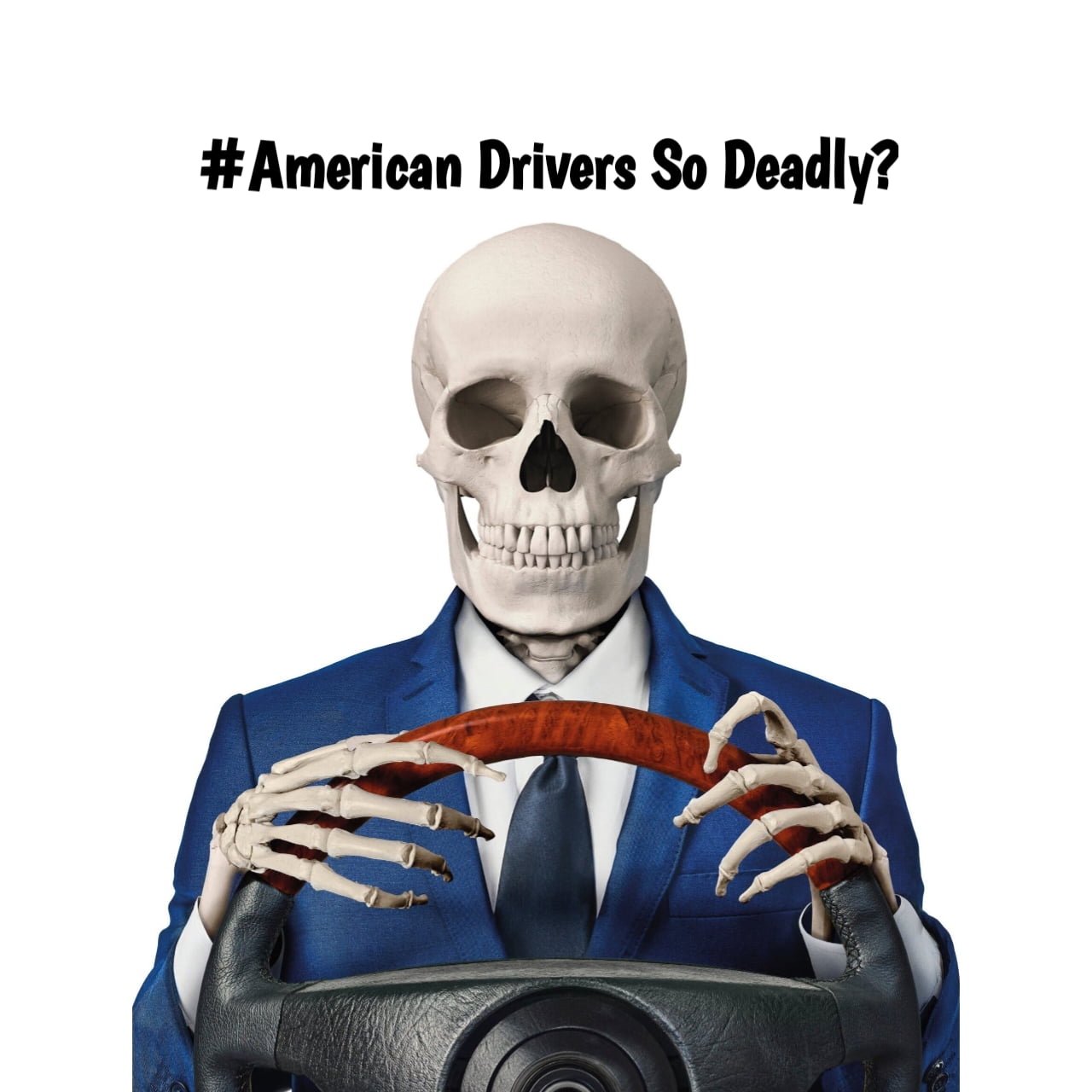Following a period of decreasing mortality rates over several decades, there has been a recent resurgence in perilous driving.
In the summer of 1999 Deborah Kuhls embarked on a transformative chapter in her medical career as she relocated from New York to Maryland This move marked the beginning of her tenure as a surgical fellow at the R Adams Cowley Shock Trauma Center in Baltimore Founded by a trailblazer in emergency medicine this institution stands as one of the nation’s busiest critical care facilities tending to approximately 8000 patients annually many teetering on the brink of death.
At 31 Kuhls with a background as a banker before pursuing medicine considered herself well equipped for the challenges that awaited Despite her unusual journey into the medical field she exuded a calm and composed demeanor crucial traits for the demanding environment she was about to enter However the first few months at Shock Trauma tested even her steely resolve The center dealing extensively with car and motorcycle crash victims presented a grim reality where not everyone could be saved On the worst days it felt like an equal number of patients were being revived as were being escorted down to the basement morgue.
Kuhls had previously undergone a residency at the Albert Einstein College of Medicine in the Bronx where she received training on handling penetrative trauma—stab wounds impalements gunshots However Shock Trauma exposed her to a different realm of injuries—blunt force trauma often challenging to diagnose Unlike gunshot wounds which leave clear evidence the aftermath of a car crash could be deceivingly subtle the damage hidden from the untrained eye.
She explained the physics involved emphasizing how the floppy parts of the body intestines kidneys livers keep moving if abruptly halted a crucial factor in understanding and addressing internal bleeding Collaborating with data driven surgeon Carl Soderstrom at Shock Trauma Kuhls witnessed the power of comprehensive information collection Soderstrom’s meticulous approach included details like the size and scope of wounds and the intoxicants in patients’ systems This method added depth to their work quantifying the profound consequences of crashes and turning abstract discussions into tangible measurable data.
In 2000, Kuhls accepted a dual-track role as director of the trauma I.C.U. and assistant professor of surgery at the University of Nevada School of Medicine in Las Vegas. Her interest in data accompanied her, driving her to conduct crucial surveys, such as one focusing on the low usage of car seats in the local Hispanic community. However, obtaining information was no easy feat, and Kuhls found herself navigating the challenges of relying on publicly available data and cold-calling for additional insights.
Gradually, a clearer picture emerged. Outside the glittering chaos of the Las Vegas Strip, the city’s roads revealed patterns. The flat and fast thoroughfares encouraged speeding, a reliable predictor of injury severity. Slow roads, on the other hand, witnessed serious wrecks due to blown stop signs and red lights, exacerbated by the presence of pedestrians. Kuhls discerned what worked as well—footbridges over Las Vegas Boulevard led to a decline in pedestrian deaths, and strategic stoplights curbed drag racing on certain stretches.
From 2010 to 2019, the overall trend in Nevada suggested a decline in serious injuries and deaths, aligning with national statistics. Technological advancements played a significant role, with multiple airbags becoming standard and additional safety features making cars more resilient to crashes. This improved technology not only enhanced drivers’ peripheral awareness but also increased the likelihood of survival in accidents that might have been fatal in older vehicles.

However, the narrative took an unexpected turn in 2020. The emergence of the COVID-19 pandemic seemed to correlate with a disturbing surge in road-related injuries, despite lockdowns and diminished traffic. In 2021, Nevada recorded 385 fatalities, marking a 15-year high. The subsequent year offered little respite, with 382 fatal crashes and a staggering 114 percent increase in cyclist fatalities.
Kuhls and her colleagues scrutinized the data, unveiling a troubling reality. Drivers were speeding more on both highways and surface streets, recklessly navigating intersections with alarming frequency. In contrast, seatbelt usage saw a decline, resulting in a surge of injuries to unrestrained drivers and passengers. Intoxicated-driving arrests, which had steadily declined over the past decade, rebounded to near historic highs.
The data painted a perplexing picture, challenging the conventional understanding of road safety factors. Despite the technological strides and safety measures implemented in vehicles, the human element—behavior behind the wheel—proved to be a formidable variable. The intersection of the COVID-19 pandemic and altered driving habits emphasized the complex interplay of external factors on road safety.
In conclusion, Deborah Kuhls’s journey from Shock Trauma in Baltimore to her pivotal role in Las Vegas reflects a deep commitment to unraveling the complexities of road-related injuries. Her integration of data-driven approaches sheds light on the evolving landscape of road safety challenges, underlining the need for continuous research and targeted interventions to address the rising toll of accidents on our roads.
In the complex tapestry of American roads, a disturbing trend has emerged, fueled by a confluence of factors that transcend the mere mechanics of vehicular motion. Deborah Kuhls, now a professor of surgery at the Kirk Kerkorian School of Medicine at U.N.L.V. and chief of trauma at an affiliated public hospital, offers insights into this phenomenon, drawing connections between societal shifts and the alarming rise in road-related incidents.
Kuhls posits a theory rooted in the unique circumstances of the Covid-19 pandemic. Drivers, having endured prolonged periods of isolation and heightened personal conflicts during lockdowns, hit the roads with an exacerbation of pre-existing issues. Self-medication with drugs or alcohol, coupled with heightened recklessness, created a perilous mix, contributing to an uptick in road-related injuries and fatalities.
Attending the annual meeting of the Governors Highway Safety Organization in 2022, Kuhls discovered that this behavioral pattern wasn’t exclusive to Nevada; it had permeated nearly every state in the country. National Highway Traffic Safety Administration data revealed a staggering 16% surge in crashes from 2020 to 2021, totaling over six million incidents, approximately 16,500 wrecks daily. The fatality toll was even grimmer, reaching 42,939 in 2021, the highest in fifteen years, with a significant portion linked to intoxicated or unrestrained driving and excessive speed.Researchers delve deeper, unveiling the role of “trait aggressiveness” in driving behavior.
Stress, anxiety, fear, and anger in daily life amplify recklessness on the road, with individuals prone to aggressive traits displaying a higher willingness to compromise safety. The pervasive issue, however, lies in the collective baseline of anger and anxiety in society, compounded by the ubiquitous reliance on cars for mobility, especially in non-walkable cities with inadequate public transportation.
Heather Padilla’s pilot study in rural Georgia underscores a disturbing trend — a prevailing acceptance of speeding and frequent engagement with this risky behavior. Residents, feeling familiar with their roads, often underestimated their actual speed, leading to potentially dangerous situations.
Online platforms like Reddit become a sounding board for the changing mindset of American drivers. The threads reveal escalating road rage incidents, often triggered by retaliation for perceived slights. Electronic distraction, despite legislative efforts to curb it, remains a pervasive issue. Distracted driving, akin to driving under the influence, increases crash risk, with visible signs of inconsistency in speed and lane navigation.
The auto industry, under government pressure, introduces technologies to deter phone use while driving. Still, these features are overridable and accessible primarily as costly add-ons, posing limitations to their widespread adoption. The Department of Transportation’s early-2023 data reflects a concerning rise in fatal crashes in 21 states, emphasizing the need for comprehensive measures.
Col. Matt Langer of the Minnesota State Patrol highlights the effectiveness of focused enforcement on speeding, seatbelt use, impairment, and distraction. Monitoring high-risk areas and dedicating resources to heavy-traffic days have proven instrumental in curbing fatalities. However, the resistance to technology, coupled with concerns about civil liberties, poses challenges to broader adoption.
Deborah Kuhls sheds light on the political landscape influencing road safety initiatives. In Nevada, legislative decisions restricting the use of speed cameras reveal the tension between liberty and safety. As of 2023, only 18 states and the District of Columbia have legalized speed cameras, reflecting the divide in approaches to enforcement.
Transportation Secretary Pete Buttigieg emphasizes the need for a holistic approach, integrating behavioral interventions with infrastructure design. The Safe Streets and Roads for All grant program allocates $5 billion to address road-safety issues. However, the slow pace of implementation and challenges in adapting to new patterns of life hinder progress, as seen in cities like Washington.
The AAA Foundation’s Traffic Safety Culture Index offers a sobering snapshot of American driving behavior. The 2023 report exposes alarming statistics — high-speed lane switching, tailgating, running red lights, using phones while driving, and exceeding speed limits are prevalent. Despite awareness of disapproval from important individuals, drivers persist in risky behaviors, defying logic that faster driving yields minimal time savings.
Cultural shifts are challenging to instigate, as demonstrated by Mayor Muriel Bowser’s Vision Zero plan in Washington, which aimed to eliminate traffic deaths by 2024 but faced delays and mismanagement. Even in cities like New York, where substantial funds were allocated to safer streets, progress is uneven, with cyclist deaths surging.
Pete Buttigieg’s optimism stems from the belief that decisions shaping road culture can lead to positive outcomes, as witnessed in European cities. While road-safety initiatives are less likely to be partisan issues, changing entrenched behaviors demands time and consistent effort.
The AAA Foundation’s Traffic Safety Culture Index encapsulates the paradox of driving — knowledge of risks and societal disapproval coexists with persistent risky behaviors. The ultimate challenge lies in reshaping a driving culture deeply ingrained with base emotions and influenced by the behaviors of fellow road users.
As we navigate the complex terrain of American roads, the quest for safer streets requires a multifaceted approach — from technology and enforcement to infrastructure design and cultural shifts. Whether it’s addressing the aftermath of Covid-19-induced frustrations, tackling trait aggressiveness, or rethinking the relationship between drivers, vehicles, and roads, a comprehensive strategy is imperative to reverse the alarming trajectory of road-related incidents and fatalities.










